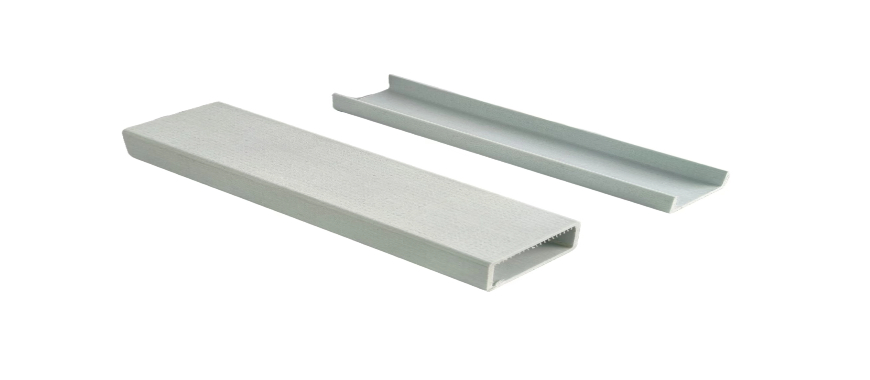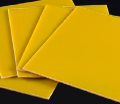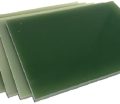
Fiber reinforced plastic products are composite materials combining fibers and a polymer matrix for enhanced performance. These materials are widely valued for their exceptional strength and durability. Fibers such as fiberglass, carbon fiber, and aramid fiber provide reinforcement, while the polymer matrix binds them together and distributes loads evenly. This structure ensures that fiber reinforced plastic products excel in applications requiring high strength-to-weight ratios. Fiberglass is often used for its cost-effectiveness, while carbon fiber offers superior stiffness. Aramid fibers are chosen for impact resistance. The polymer matrix also contributes to chemical resistance, thermal stability, and overall structural integrity. Together, these materials make fiber reinforced plastic products versatile solutions in industries ranging from construction to aerospace and beyond.
How Fiber Reinforced Plastic Products Are Made
Understanding the manufacturing processes of fiber reinforced plastic products is essential for appreciating their versatility and durability. These methods play a significant role in shaping FRP products to meet diverse industrial and structural needs.
Manufacturing Processes
Pultrusion Process for Continuous Profiles
The pultrusion process is a highly efficient method for creating continuous profiles of fiber reinforced plastic products. Fibers are impregnated with resin and pulled through a heated die. The die shapes the product while curing the resin, forming strong, lightweight profiles. Pultrusion is ideal for applications requiring uniform cross-sections, such as beams, rods, and panels. Its efficiency ensures consistent quality, making it a preferred choice for large-scale production of fiber reinforced plastic products.
Molding Techniques: Compression, Resin Transfer, and Wet Layup
Molding techniques offer flexibility in manufacturing fiber reinforced plastic products for various shapes and applications. Compression molding involves pressing fibers and resin in a heated mold, creating strong, precise parts. Resin transfer molding injects resin into a closed mold containing fiber preforms, ensuring accurate details and minimal waste. Wet layup, a simpler technique, involves manually placing fibers and resin in an open mold. These methods cater to specific product needs, such as structural components and decorative items.
Filament Winding for Cylindrical Products
Filament winding is a specialized process for manufacturing cylindrical fiber reinforced plastic products like pipes and tanks. Continuous fibers are coated with resin and wound onto a rotating mandrel in specific patterns. The fibers cure to form a rigid structure with high strength in desired directions. This method is widely used in industries requiring pressure-resistant and lightweight cylindrical components.
Bladder Molding for Complex Shapes
Bladder molding enables the creation of complex, hollow fiber reinforced plastic products. A bladder is placed inside fiber reinforcements within a mold, and resin is applied. The bladder inflates, pressing the fibers against the mold to form the desired shape. Once cured, the bladder is removed, leaving a strong, lightweight product. This technique is commonly used for intricate components, such as aerospace and automotive parts.
Applications of Fiber Reinforced Plastic Products
Fiber reinforced plastic products are indispensable across various industries due to their versatility and superior properties. They provide tailored solutions for structural, industrial, and recreational applications, making them a popular choice in demanding environments.
Examples of FRP Products
Fiberglass-Reinforced Plastic: Piping, Panels, and Tanks
Fiberglass-reinforced plastic products are widely used in piping, panels, and storage tanks. These products are lightweight, corrosion-resistant, and durable, making them ideal for transporting or storing chemicals and liquids. Piping systems benefit from their ability to withstand high pressures and harsh environments without degrading. Panels provide excellent insulation and structural strength for walls, roofs, and partitions. Storage tanks constructed from fiberglass-reinforced plastic products are commonly used in industries like agriculture, wastewater treatment, and manufacturing.
Carbon Fiber-Reinforced Polymer: Aerospace and Automotive Components
Carbon fiber-reinforced polymer products are synonymous with high-performance applications. Their exceptional strength-to-weight ratio makes them ideal for aerospace and automotive components. Aircraft fuselages, wing structures, and interior panels benefit from reduced weight and enhanced fuel efficiency. In automotive engineering, these products are used for racing car frames, body panels, and structural reinforcements. Their ability to enhance speed and efficiency has revolutionized transportation technology.
Structural Applications: Beams, Gratings, and Bridge Reinforcements
Fiber reinforced plastic products are extensively utilized in structural applications. Beams made from FRP provide long-lasting support for bridges and buildings, reducing maintenance needs. Gratings are used for walkways and platforms in industrial and marine environments due to their corrosion resistance and slip resistance. Additionally, FRP bridge reinforcements improve the longevity of concrete structures by preventing deterioration caused by environmental factors.
Industry-Specific Uses
Construction: Rebar, Cladding, and Formwork
Fiber reinforced plastic products have transformed the construction industry. FRP rebar is increasingly used to reinforce concrete structures due to its non-corrosive nature. Cladding systems made from FRP offer lightweight and durable solutions for exterior walls, protecting buildings from weathering. Formwork constructed from FRP provides reusability and precision, reducing costs and improving project timelines.
Marine: Boat Hulls, Docks, and Walkways
In marine applications, fiber reinforced plastic products shine for their resistance to saltwater and moisture. Boat hulls constructed from FRP provide strength and durability while remaining lightweight, ensuring optimal performance. Docks and walkways made from FRP are safe, slip-resistant, and long-lasting, making them a preferred choice for waterfront environments.
Industrial: Chemical-Resistant Linings and Gratings
Industrial applications demand materials that withstand harsh chemicals and high temperatures. Fiber reinforced plastic products deliver by offering chemical-resistant linings for tanks, pipes, and equipment. Industrial gratings provide safe and durable flooring solutions in factories, refineries, and power plants, ensuring worker safety and operational efficiency.
Recreational: Sports Equipment and Playground Structures
Fiber reinforced plastic products are used extensively in recreational applications. Sports equipment such as hockey sticks, fishing rods, and bicycle frames benefit from FRP’s lightweight and high-strength properties. Playground structures made from FRP are durable, weather-resistant, and safe, ensuring long-term enjoyment for children.
Corrugated Fiberglass Reinforced Plastic Roofing Solutions Guide
Advantages of Fiber Reinforced Plastic Products
Fiber reinforced plastic products offer numerous advantages, making them a top choice across industries for applications requiring durability, performance, and versatility.
Performance Benefits of Fiber Reinforced Plastic Products
Fiber reinforced plastic products are celebrated for their exceptional performance benefits, which make them indispensable in demanding environments. Their strength-to-weight ratio is among the highest in materials used for structural and industrial applications. This means that while they are lightweight and easy to handle, they are also incredibly strong and capable of withstanding high loads.
Resistance to corrosion is another critical benefit. Unlike traditional materials such as steel or wood, fiber reinforced plastic products do not degrade when exposed to moisture, saltwater, or chemicals. This makes them an ideal choice for marine and industrial settings. Furthermore, their UV resistance ensures that these products maintain their structural integrity and aesthetic appeal, even after prolonged exposure to sunlight.
Thermal and dimensional stability are also noteworthy. Fiber reinforced plastic products perform well across a range of temperatures, maintaining their shape and strength under extreme conditions. This stability reduces the risk of warping, cracking, or expansion, making them a reliable solution for various environmental challenges.
At GangLong Fiberglass, we understand these performance benefits deeply. Our products are specifically engineered to meet the most rigorous demands, ensuring reliability and long-term satisfaction for our clients.
Design Versatility of Fiber Reinforced Plastic Products
The design versatility of fiber reinforced plastic products is a key factor contributing to their widespread adoption. These materials can be tailored to meet specific requirements, making them suitable for applications in construction, aerospace, and beyond.
One of the most valuable attributes is the ability to customize mechanical properties. Fiber orientation and the type of polymer matrix can be adjusted to achieve desired levels of strength, flexibility, or impact resistance. This flexibility allows engineers and designers to optimize fiber reinforced plastic products for precise applications.
Aesthetic options also add to their appeal. Fiber reinforced plastic products can be manufactured in custom colors and finishes, offering both functional and decorative uses. Whether it’s a sleek, polished look for architectural cladding or a durable finish for industrial gratings, these materials adapt seamlessly.
At GangLong Fiberglass, we emphasize this versatility. We collaborate closely with our clients to create solutions that meet their specific needs, ensuring that every product delivers both performance and aesthetic excellence. Our goal is to provide fiber reinforced plastic products that are as versatile as they are reliable.
Fiber reinforced plastic products not only excel in performance but also offer unmatched flexibility in design, ensuring they remain a superior choice for a wide range of applications.
Fiberglass Reinforced Panels for Shower: Easy, Durable Solutions
Challenges and Limitations of Fiber Reinforced Plastic Products
Despite their many advantages, fiber reinforced plastic products face certain challenges and limitations that must be addressed. These issues include concerns about disposal, recycling, and cost-effectiveness compared to traditional materials. However, innovative solutions are emerging to tackle these challenges and improve sustainability.
Common Issues with Fiber Reinforced Plastic Products
Disposal and Recycling Concerns
One of the most significant challenges of fiber reinforced plastic products is their end-of-life disposal. Unlike metals, which can be melted and recycled easily, FRP materials are more difficult to process. Their composite nature, combining fibers and polymers, makes separation and recycling challenging. As a result, many FRP products end up in landfills, which raises environmental concerns.
Additionally, the lack of widespread recycling facilities for FRP contributes to this issue. The environmental impact of fiber reinforced plastic products, particularly when disposed of improperly, has led to a growing demand for more sustainable practices. However, the complexity of recycling FRP should not overshadow its durability and long lifespan, which reduce the frequency of replacement and waste generation.
At GangLong Fiberglass, we are actively exploring methods to minimize the environmental footprint of our products. By collaborating with researchers and innovators, we aim to develop practical solutions that address these disposal challenges.
Solutions for Sustainability in Fiber Reinforced Plastic Products
Advances in Recyclable Composites
The development of recyclable composites is revolutionizing the future of fiber reinforced plastic products. New materials are being engineered to allow easier separation of fibers and polymer matrices, enabling effective recycling. For instance, thermoplastic composites, which can be remolded and reused, are gaining popularity as a sustainable alternative.
Research into bio-based resins and natural fibers also contributes to making fiber reinforced plastic products more environmentally friendly. These materials not only reduce reliance on non-renewable resources but also make recycling simpler. At GangLong Fiberglass, we stay at the forefront of these innovations, offering clients products designed with sustainability in mind.
Reuse Potential in Secondary Applications
Another promising solution lies in repurposing fiber reinforced plastic products for secondary uses. Components such as gratings, panels, or beams can often be reused in less demanding applications, extending their lifespan. For example, FRP materials from decommissioned structures can be repurposed for agricultural or industrial use, reducing waste.
Innovative design approaches, including modular systems, further enhance the reuse potential of fiber reinforced plastic products. By creating components that can be easily disassembled and reassembled, we enable clients to maximize the value of their investment. At GangLong Fiberglass, we are committed to exploring and implementing reuse strategies to enhance the sustainability of our offerings.
Fiber reinforced plastic products face challenges, but ongoing advancements in recycling and sustainability are paving the way for a greener future. These efforts ensure that the advantages of FRP can be enjoyed with minimal environmental impact.
Fiberglass Reinforced Resin Panels: Durable Solutions
Future Trends in Fiber Reinforced Plastic Products
Fiber reinforced plastic products continue to evolve, driven by innovative materials and expanding applications. These advancements promise to enhance performance, sustainability, and versatility in multiple industries.
Innovations in Materials
Development of Hybrid Fibers and Bio-Based Resins
Hybrid fibers are revolutionizing fiber reinforced plastic products by combining the strengths of multiple materials. For example, blending carbon fibers with aramid fibers enhances both stiffness and impact resistance, making the resulting products ideal for aerospace and automotive industries. These hybrids can be customized to meet specific performance requirements, offering a significant advantage over traditional materials.
Bio-based resins are another groundbreaking development. These resins, derived from renewable resources like plant oils, reduce reliance on petroleum-based products. They also contribute to improved sustainability by lowering the environmental impact of fiber reinforced plastic products. As research into bio-resins advances, we anticipate their integration into more applications, ensuring greener manufacturing practices.
Nanocomposites further enhance the performance of fiber reinforced plastic products. By incorporating nanoscale additives, such as graphene or carbon nanotubes, these materials gain increased strength, thermal conductivity, and electrical properties. At GangLong Fiberglass, we embrace such innovations to develop advanced solutions for our clients, ensuring products meet the highest standards of performance and environmental responsibility.
Expanding Applications
Use in Green Buildings and Renewable Energy Systems
Fiber reinforced plastic products are gaining popularity in green construction projects. Their lightweight yet durable nature makes them ideal for energy-efficient buildings, reducing structural loads and material use. FRP panels and reinforcements improve insulation and sustainability, aligning with global green building standards.
In renewable energy systems, fiber reinforced plastic products play a crucial role. Wind turbine blades, constructed with advanced FRP materials, are lighter and more efficient, enabling larger turbines to generate more energy. Solar panel supports made from FRP resist corrosion and reduce maintenance, increasing system longevity. These applications underscore the growing importance of fiber reinforced plastic products in the transition to renewable energy.
Emerging Roles in Robotics and 3D-Printed Components
Robotics and 3D printing are two areas where fiber reinforced plastic products are poised to make a significant impact. In robotics, FRP materials offer a combination of strength, flexibility, and lightweight properties, essential for designing advanced robotic arms and frames. These materials also enhance precision and performance, enabling robots to handle complex tasks with ease.
3D printing is transforming how fiber reinforced plastic products are manufactured. By integrating FRP filaments into 3D printers, complex and customized components can be produced with minimal waste. This method is especially beneficial for prototyping and creating intricate designs in industries like aerospace, medical devices, and consumer products. At GangLong Fiberglass, we are excited to explore these cutting-edge applications, pushing the boundaries of what fiber reinforced plastic products can achieve.
The future of fiber reinforced plastic products is bright, driven by material innovations and expanding applications. As technology advances, these products will continue to redefine possibilities in sustainability, performance, and design.
FAQs about Fiber Reinforced Plastic Products
Fiber reinforced plastics come in various forms depending on the type of fiber used. Common examples include fiberglass-reinforced plastic, carbon fiber-reinforced polymer, and aramid fiber-reinforced plastic. Fiberglass-reinforced plastics are widely used for items like pipes, tanks, and panels due to their corrosion resistance and lightweight properties. Carbon fiber-reinforced polymers are ideal for high-performance applications such as aerospace and automotive components, where strength and low weight are critical. Aramid fiber-reinforced plastics, known for their impact resistance, are used in protective gear and certain industrial applications. These examples highlight the versatility of fiber reinforced plastic products and their ability to meet specific industry needs. At GangLong Fiberglass, we specialize in providing tailored solutions using these advanced materials.
Fiberglass reinforced plastic (FRP) is highly versatile and used in a range of industries. It is commonly applied in construction for cladding, formwork, and rebar, offering durability and lightweight performance. In marine environments, FRP is used to construct boat hulls, docks, and walkways, providing resistance to moisture and saltwater. Industrial uses include chemical-resistant tanks and linings, where its ability to withstand harsh chemicals makes it essential. Additionally, FRP finds applications in recreational products, such as playground structures and sports equipment. This adaptability makes fiberglass reinforced plastic a preferred material for projects requiring strength, corrosion resistance, and longevity.
The four main types of fiber reinforced plastic products are fiberglass, carbon fiber, aramid fiber, and basalt fiber composites. Fiberglass is the most widely used, known for its cost-effectiveness and suitability for structural and industrial applications. Carbon fiber composites offer superior strength-to-weight ratios, ideal for aerospace and automotive industries. Aramid fiber composites, such as Kevlar, are known for exceptional impact and abrasion resistance, making them suitable for protective gear and high-stress environments. Basalt fiber composites, made from volcanic rock, are gaining popularity for their thermal and chemical resistance. These four types cater to diverse applications, each with unique properties and benefits.
Fiber reinforced plastic products are used in numerous industries due to their versatility. In construction, FRP is employed for bridges, beams, and facades due to its lightweight and corrosion-resistant properties. The marine industry relies on FRP for boat hulls and decking, ensuring durability in harsh conditions. Industrial applications include pipes, tanks, and gratings designed to withstand chemicals and high temperatures. Additionally, FRP is used in renewable energy systems, such as wind turbine blades and solar panel supports, for its lightweight and strength. Recreational uses include sports equipment and playground structures, showcasing the material’s adaptability and reliability.

As the editor of GangLong Fiberglass, I have years of experience and in-depth research, focusing on cable tray products, fiberglass solutions, and grille systems. I incorporate years of industry insights and practical experience into every content, committed to promoting the progress of the industry. At GangLong Fiberglass, my commitment is reflected in every product, from innovative cable trays to durable fiberglass solutions and sturdy grille systems. As an authoritative voice in the industry, my goal is to provide valuable information to professionals and businesses and promote forward-looking solutions.


